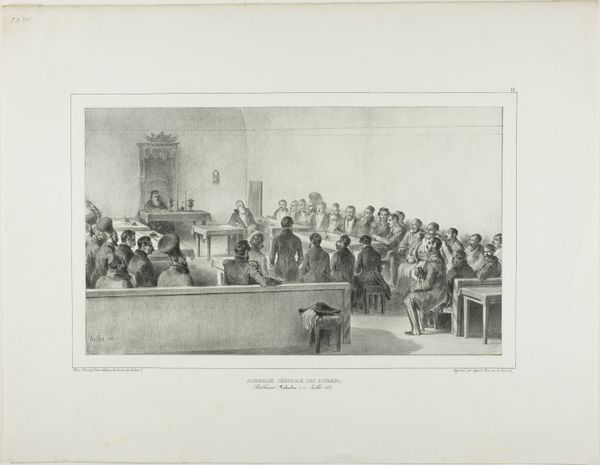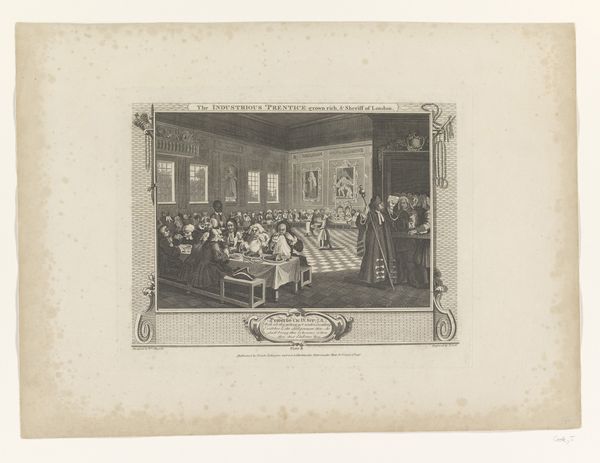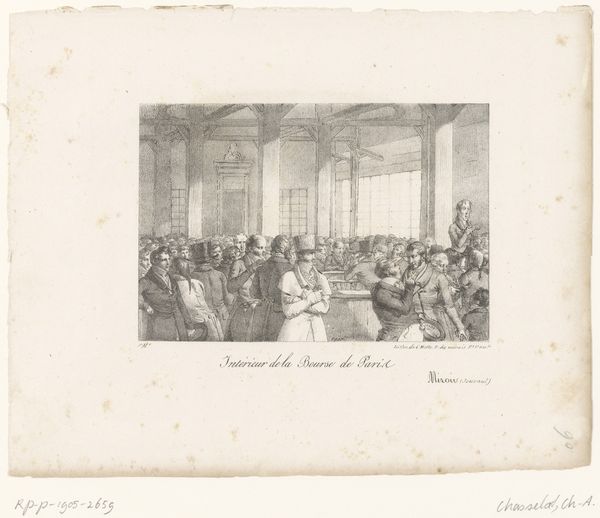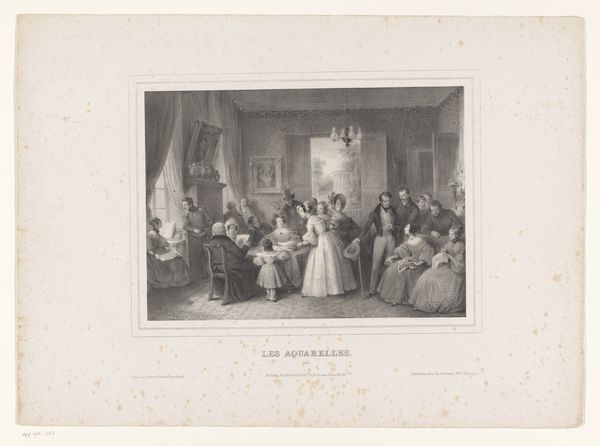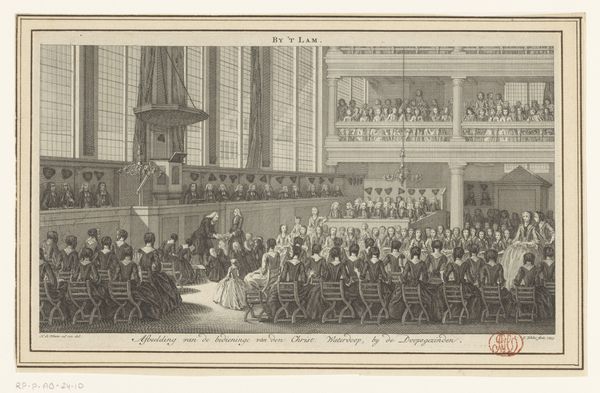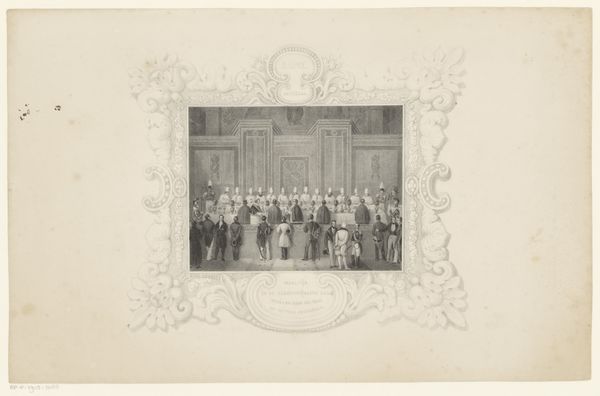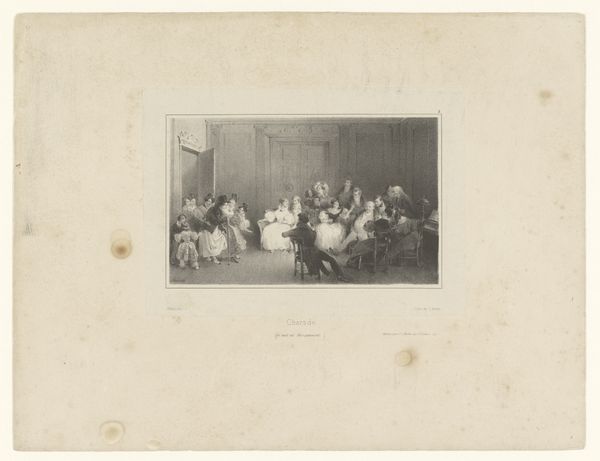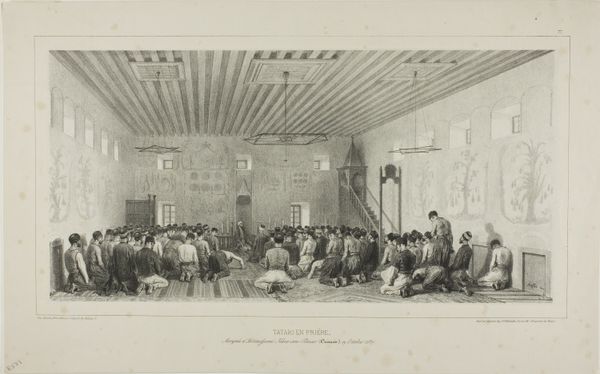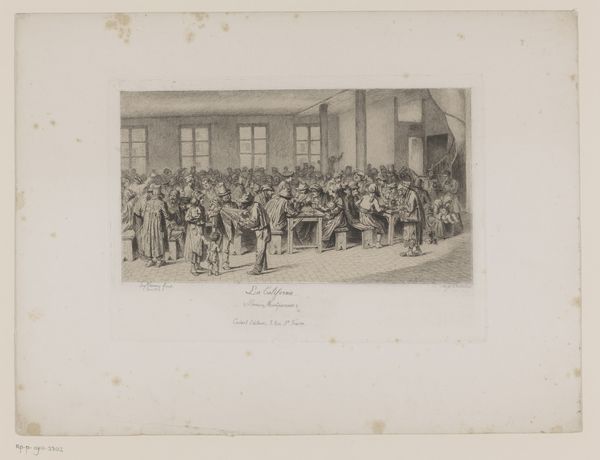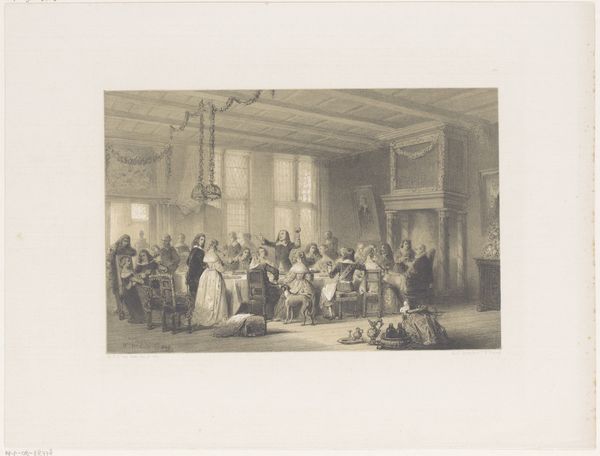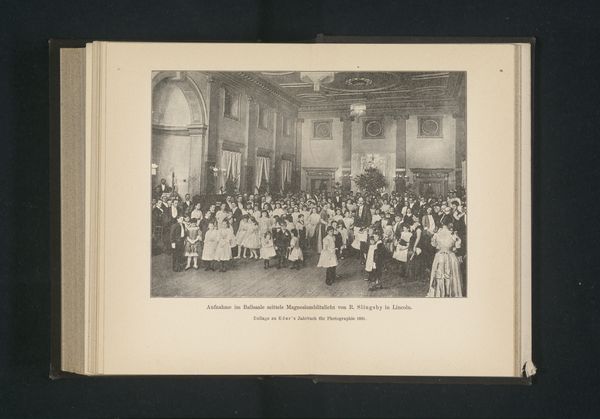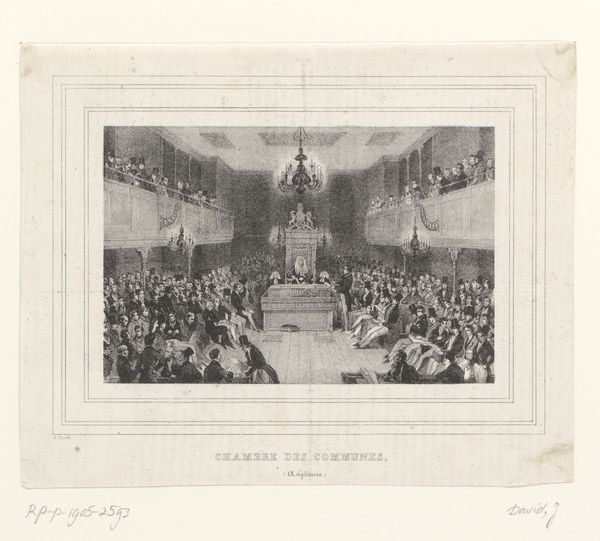
Interieur in Nederlands Indië met dansende vrouwen, muzikanten en toeschouwers 1843 - 1845
0:00
0:00
pauluslauters
Rijksmuseum
print, engraving
# print
#
romanticism
#
orientalism
#
genre-painting
#
history-painting
#
engraving
Dimensions: height 340 mm, width 510 mm
Copyright: Rijks Museum: Open Domain
Curator: Paulus Lauters, between 1843 and 1845, created this engraving entitled, "Interior in Netherlands Indies with Dancing Women, Musicians, and Spectators." Editor: Wow, my first impression is that it feels incredibly formal and yet strangely dreamlike. All these faces, like looking through a misty window. Curator: That sense of formality, and perhaps even detachment, could speak to the positionality of the European gaze inherent in Orientalist art of this period. We need to consider the ethics of representation. Editor: Absolutely, it’s a Western artist’s rendering of, essentially, another world. Makes you wonder what the scene actually felt like to be in, right? Beyond the colonial lens. What do we even really see here? Curator: The piece straddles genre painting and history painting, genres that both played roles in constructing narratives around cultural encounters and societal power dynamics. Editor: The light's coming in from everywhere but also from nowhere, all these chandeliers and big windows but something so flat about it at the same time… It's all quite theatrical. Everyone seems so...posed. Curator: Indeed. Romanticism deeply informed these artistic practices; often prioritizing idealized or dramatized scenes that catered to European audiences, rather than objective representation. This piece acts as a case study. Editor: And there's so much detail crammed in, from the hanging lamps to the people at the periphery... it feels like everyone is caught in the same breath. I suppose art like this reflects how others perceived or, rather, wanted to perceive distant lands, am I right? Curator: Precisely, the details speak volumes about the romanticized view of "exotic" cultures that were prevalent during the colonial era and still perpetuate stereotypes today. Editor: Reflecting on it now, there is an uneasiness that starts to brew with each added layer. You just think—whose gaze, and at whose expense? Curator: Precisely, making the viewing experience an act of active questioning, something for all of us to engage in.
Comments
No comments
Be the first to comment and join the conversation on the ultimate creative platform.
